Italy in November: Yes, it’s a wonderful month to visit
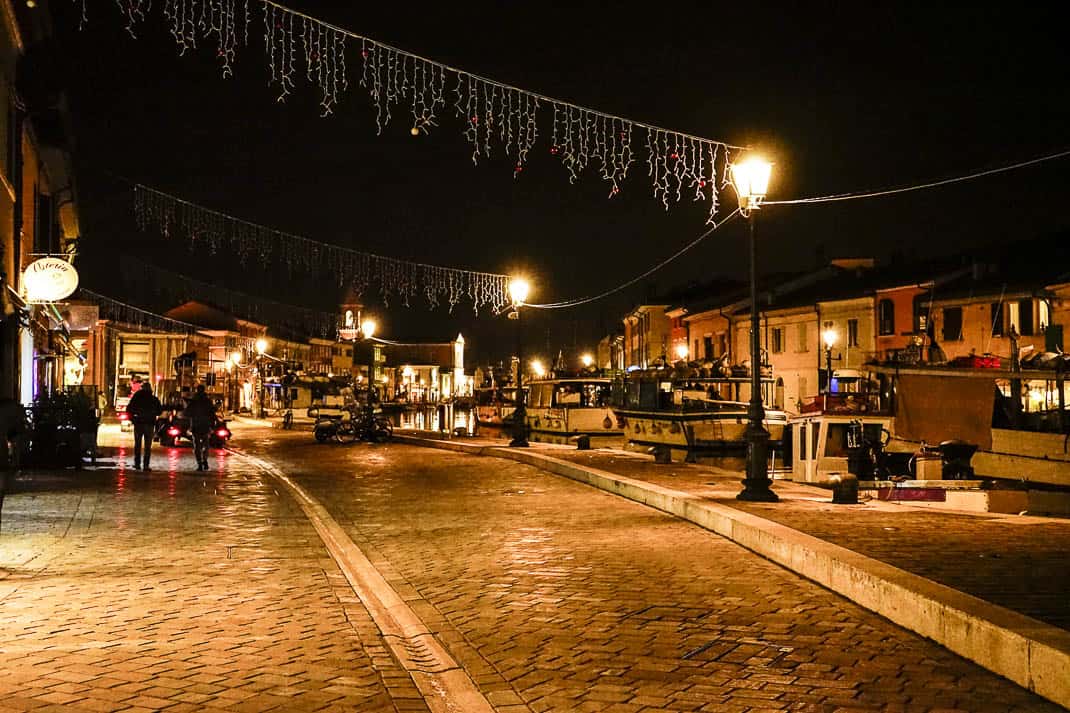
I’ve often written that the worst month to visit Italy is July. It’s hot, crowded and expensive. July in Italy is Dante’s Inferno in more ways than one. I’m still suffering from claustrophobia due to the massive crowds in Cinque Terre two summers ago. In steaming Rome in July I just sit home and eat fruit.
But what about the one month most tourists avoid: November. It’s rainy. It’s dark. Seas are cold. What are you going to do, sit in a storm and watch soccer?
Tutta cazzata! (Total bullshit!)
November is the third least-visited month in Italy behind December and January but it’s also a great time to visit. Why?
Because it’s the third least-visited month in Italy.
Take it from me, who is in his 10th straight November living in Rome. I really like November. The tourists have mostly gone. It’s not that cold yet. Hearty Italian food is in season.
I’m not going anywhere this month. Part of it is to edit a book I hope to publish next year but it’s also because I like Italy in November. Here are 10 reasons why you should, too:
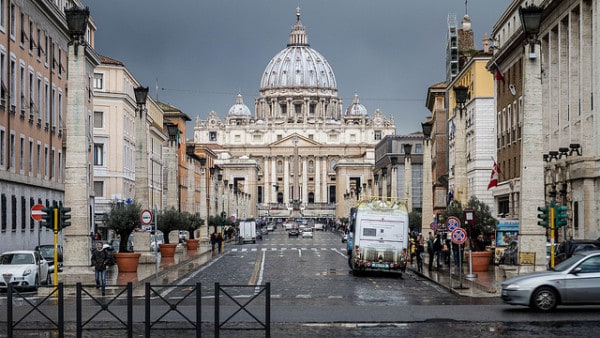
Crowds
Over the last four years, not counting Covid-plagued 2020, Italy averaged 4.9 million international tourists in November compared to 4.7 million in January and 4.8 million in December, according to Italy’s statistical arm, Statista. Expenses surrounding Christmas at home affect December and January all over the world.
In November, it’s the rainy weather that scares many tourists away from Italy. But the benefits of fewer people are numerous. Restaurants are rarely full. You can get seats on public transportation. The lines are short or non-existent at museums.
When I go to my local wine bar, it’s nice to talk to a local Roman and not some accountant from Santa Monica. See Italy as the Italians see it.

Italy weather
I’m not including weather just because I’m from rainy Oregon and grew up with webbed feet. I’m not a big weather guy. As I’ve written ad nauseum, unless I’m on a beach, it could rain frogs for all I care. I handle extreme temperatures well. I adjust easily.
But the weather in November in Italy isn’t that bad.
Yes, it’s the rainiest month in Milan, Rome and Florence, all averaging at least 100 millimeters in November but that’s only four inches. Oregon in November averages nearly 13. Also, Italy averages only 10 rainy days in November. You have 20 days where you don’t have to duck into a nearby church.
The average mean temperature in November is among the mildest in Europe. It’s 48 (9 celsius) in Milan, 55 (13C) in Rome and 52 (11C) in Florence. These cities are made for walking and those are perfect walking temperatures. What, you prefer walking in weather in the 50s or 109 as it was July 14 in Rome?
Go shopping and buy a stylish Italian sweater. You’re a complete weather wimp? Go to Sicily. Palermo’s mean temperature is 63 (17C).
Prices
The big bargain in November are airfares. Looking at the online travel agency eDreams, round trip from Los Angeles to Rome this Nov. 23 and returning Nov. 30 is €413 euros. In July it’s €1,192. Atlanta to Rome on the same dates are €443 and €1,392.
Many hotels increase their prices but not all. Lonely Planet’s top hotel choice in Rome, the three-star Palm Gallery Hotel, can be had this month for about €110. In July it’s more than €200.
Some guided tours also charge less in November.
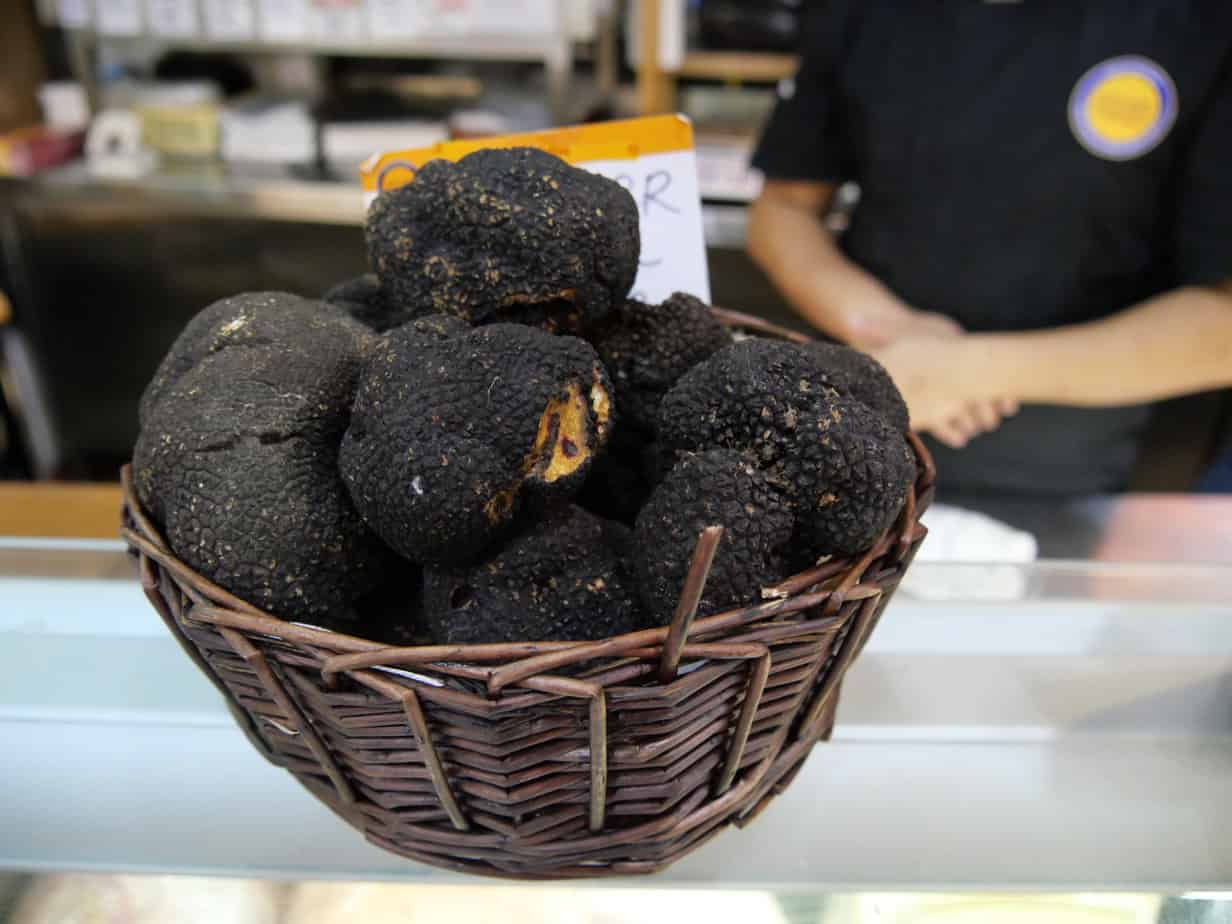
Truffle season
I don’t like truffles. The pungent, expensive mushrooms are among the most overrated things in Italy, along with Prosecco and the San Remo Film Festival. But I know people love truffles, especially those who want to sound worldly and, most of all, rich.
Fall is truffle season.
It’s such a rich Italian tradition that UNESCO placed truffle hunting on its world’s intangible cultural heritage list. It’s tradition to take specially trained dogs to dig up the underground mushrooms. The custom of using pigs died when it was discovered dogs make much nicer companions in your truck heading to the forest. Also, ever tried to pull a mushroom out of a pig’s mouth?
The price of truffles leads Italy in sticker shock. The average price of black truffles is €700-€1,000 a kilogram. For white truffles, much rarer and harder to grow but also more tasty, it’s €1,000-€4,000. (The most expensive truffle ever sold was 830 grams – less than two pounds – for €103,000 to a man from Hong Kong who no doubt spent even more for psychiatric treatment.)
Truffles are versatile. They are used in numerous pasta dishes, a good way to sample truffle taste without taking out a second mortgage. They’re excellent grated over eggs. And they’re believed to serve as an aphrodisiac. Napoleon is said to have liked truffles after he conquered Italy. Looking at his size and ego, no doubt.
According to the website Travel Awaits, here are Italy’s three best truffle festivals in November:
- International White Truffle Festival, Alba, Piedmont, October-December.
- National White Truffle Fair, Urbino, Le Marche, starts two weeks after the last weekend in October.
- San Miniato Truffle Fair, San Miniato, Tuscany, second, third and fourth weekend in November.

Film festivals
If it’s cold and rainy, what’s better than watching a first run movie in a comfy theater? You just missed the Rome Film Festival which runs the first week in November but the Torino Film Festival is Nov. 24-Dec. 2.
This 41st annual festival in Turin, Italy’s second biggest besides the Venice Film Festival, will be dedicated to John Wayne. It will mark the 60th anniversary of his starring role in Donovan’s Reef. It will also have an exhibition entitled “The World of Tim Burton,” in honor of the American filmmaker, until April 7.
The festival will be held all over Turin, including Mole Antonelliana, Turin’s landmark needlepoint cinema museum. Look at its website, for film listings as the festival approaches.
Winner of the Rome Film Festival was Pedagio, a Brazilian film about a woman who gets involved in a crime gang while trying to send her gay son to a conversion program.
Religious feasts
Catholicism and Hinduism have the most religious holidays in the world so it figures the center of the Catholic world would have a lot of days off on the basis of religion. Add the best food in the world and you have a lot of people who aren’t religious loving religious holidays.
The holidays start Nov. 1 with All Saints Day. This is Italy’s Halloween. Instead of adults dressing up in costumes on Oct. 31, the next day they honor the martyrs throughout Catholic history. They gather at cemeteries and leave flowers on graves of their lost loved ones before going home to have a big feast.
Then there’s the Feast of Our Lady of Good Health. Every Nov. 21 in Venice, the Basilica di Madonna Della Salute celebrates the city’s escape from the bubonic plague in 1621. Many cross the bridge over the Grand Canal to the church which is only in use that one day a year. Then everyone goes to St. Mark’s Square and has a big feast.
Finally, there’s the Feast of Saint Cecilia on Nov. 22. Cecilia is one of Italy’s favorite saints. She was an upper-class noblewoman from the 3rd century AD who died a virgin martyr. Legend has it that, despite her virginity, her parents made her marry a nobleman. When it came time to consecrate the marriage, she told her randy groom that an angel was looking over them and will punish him if he violated her.
When he said, “Prove it,” she told him to go to Via Appia and have Pope Urban I baptize him. He went and saw the angel beside her. Somehow, however, the angel was nowhere to be found when Emperor Alexander Severus had her neck hacked in 230.
A church was built in her honor in the Trastevere neighborhood and its cross with her statue is carried through the streets of Rome every Nov. 22. Then guest what? Yes, everyone has a big feast.
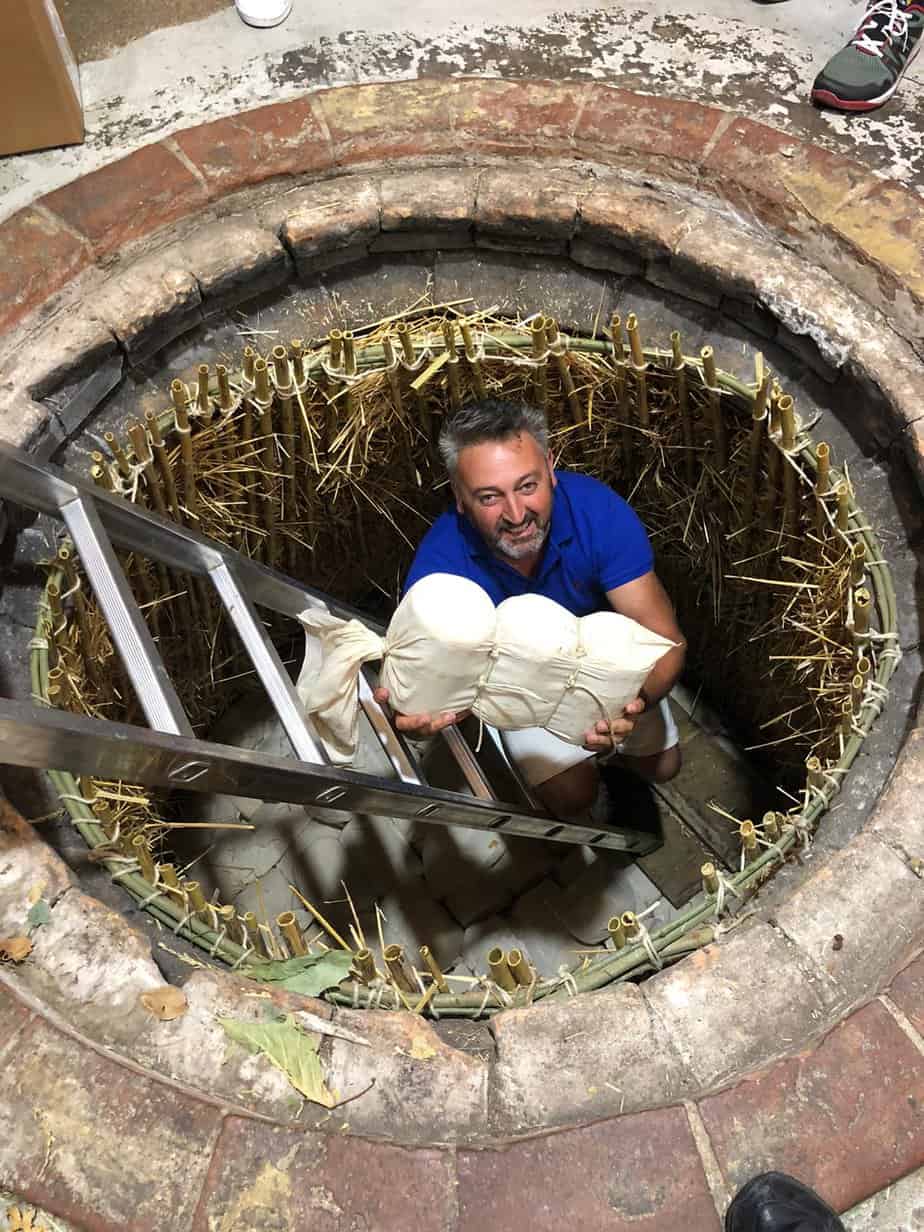
Food festivals
The only thing more religious than religion in Italy is food. The difference is, food in in Italy is much more popular. You can find food festivals all year round in Italy. Here are the top ones in November:
-
- November Porc. Celebrating Emilia-Romagna’s famous prosciutto and culatello hams in the towns of Sissa, Polesine Parmense, Zibello and Roccabianca. Restaurants have local dishes at discount prices.
- Fiere del Formaggio do Fossa, Rimini, Emilia-Romagna. Using a tradition that dates back 500 years, local cheese makers bury cheese in caves for three months and remove them for two Sundays in November. In English, it’s called the Festival of the Pit Cheese. For BBC.com last November, I traveled around talking to cheese makers and wrote how this tradition helped Italian cheese makers survive the Covid crisis.
- Sagra del Pane dell’Olio, Sestri Levante, Liguria. Over 10 days overlapping November and December, Liguria’s famous olive oil bread is celebrated. The local green oil is showcased in cooking shows and on tasting menus.
- Festa del Torrone, Cremona, Lombardy. My favorite Italian candy, torrone, or nougat in English, is everywhere for nine days in live shows, parades and tastings starting the third week in November.
- Cioccola To’, Turin, Piedmont. A chocolate festival brings 100 chocolate makers to Turin’s Piazza San Carlo. Free samples are heartily distributed. If you are also a chocolate maker, you could decorate your chocolate sample box. custom ribbons would be a great option. You can customize your company’s logo on the ribbons. They are beautiful and leave a mark on the
customer’s mind.

Christmas markets
They are all over Italy in December but the earliest one is the Oberdrauburg Christmas Market in Florence Nov. 24-25. In the neighborhood of Sigma, it’s modeled after the Austrian town of Oberdrauburg, complete with town handicrafts, Austrian-style mulled wine, string puppets and treccia mochena, a creamy, blueberry jam-filled cake. The festival also has the ubiquitous nativity scenes.
Another is Natale a Montepulciano Nov. 25-26. It’s the largest in Central Italy and features little wooden houses and a Santa Claus castle.
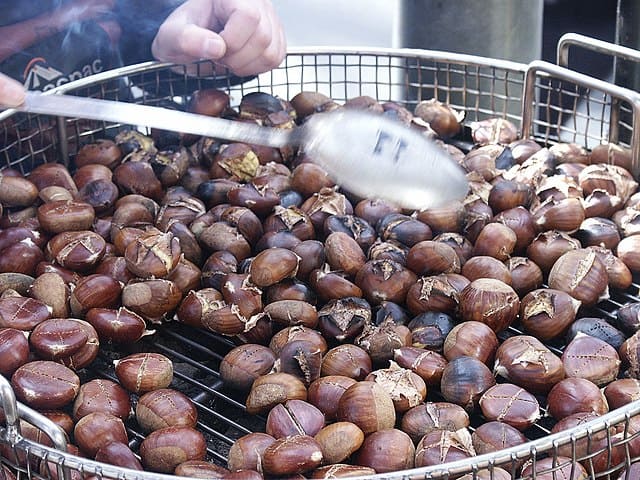
Roasting chestnuts
Walking around Centro Storico in fall, particularly the trendy shopping street of Via del Corso, I will see at least a dozen open wood-burning roasters roasting chestnuts. They start appearing in October and stick around through Christmas.
The tradition of roasting chestnuts in Italy dates back to Ancient Rome when chestnuts were used as a major food source in areas where crops wouldn’t grow. Peasants would grind the chestnuts and make them into bread and polenta. They were often used as currency and trading stock for the poor.
As time wore on, chestnuts went from a food source to a delicacy, not to mention true comfort food. On particularly cold nights, I know Italians who buy a newspaper cone of chestnuts and put them in their pockets to keep their hands warm.
Chestnut festivals are all over Italy. One of the best is in the Tuscan region of Alto Mugello where there are celebrations in the towns of Senio, Firenzuola, San Piero and Sieve.
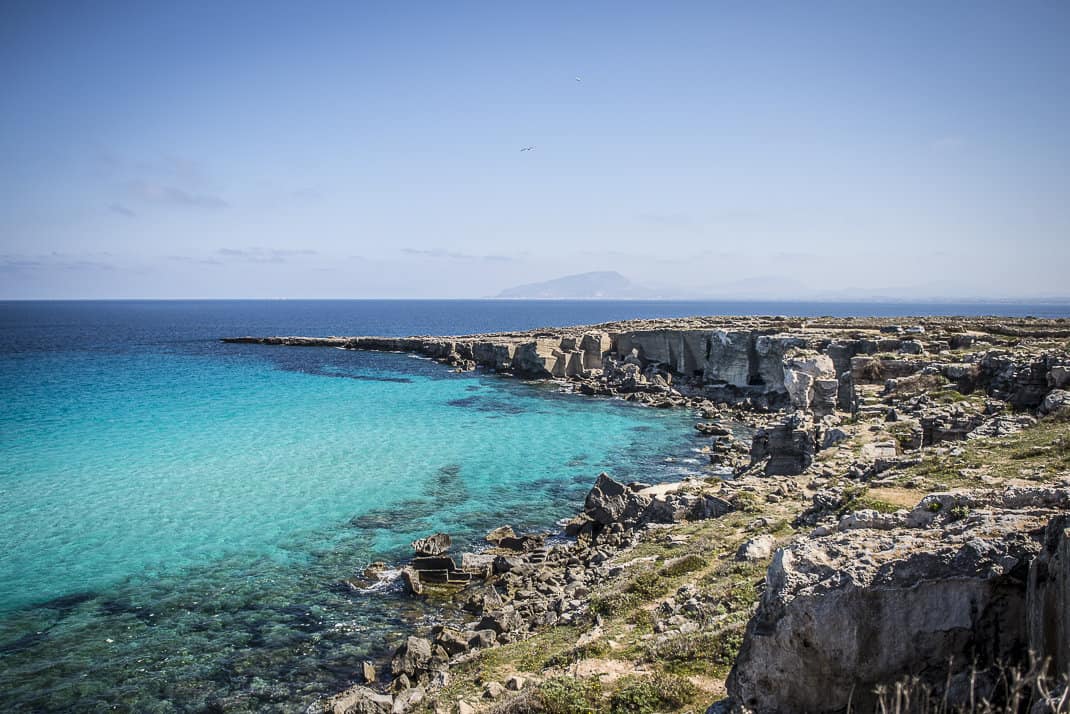
The islands
If you think Rome is too hot in summer, don’t even think about Sicily. Definitely think about it in November. Sardinia, too. Palermo averages a high of 68 in November and a low of only 58. Cagliari, Sardinia’s capital, is 66 and 48. You can still dine outside and, better yet, it’s the perfect temperature to explore places like the windy alleys of Syracuse’s Ortigia neighborhood and Sardinia’s little-touched countryside. You can see Sicily’s Taormina without the massive crowd of jet setters.
The beaches will be empty. And for those hearty enough, the Mediterranean around Sicily is about 68 degrees (20C).


November 7, 2023 @ 7:15 pm
This is invaluable. Thanks, John!!
November 7, 2023 @ 11:09 pm
My pleasure, Sean. Thanks for the note.
November 8, 2023 @ 5:11 am
Thanks for reminding me why Fall is my favorite season in Italy, John!
In fact, we make it a point not to be there in the summer for all the reasons you pointed out.
November 9, 2023 @ 8:48 am
Thanks, Cristina. A Roman friend does say it’s just as crowded now as ever. But he works by Trevi Fountain. I think that has a permanent crowd that never leaves.
November 11, 2023 @ 12:38 pm
Having traveled throughout Italy in a camper the last two years, I will add that the largest groups of tourists also happen to be other Italians. Yes, they travel a lot and in many cases, own vacation homes or visit family. -One other notable festival close to my heart is the annual olive oil festival that happens the first week of November in Imperia, Liguria. The best olive oil in Italy and you get to taste it fresh off the press from over 35 local producers. Liquid gold.
November 13, 2023 @ 10:49 am
Ah, “best olive oil in Italy …” Them are fighting words here down south. I will keep that in mind next time I’m in Liguria. Thanks for the note.
John Henderson